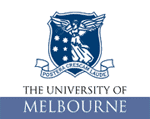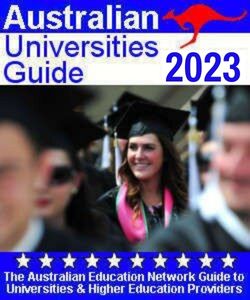University of Melbourne
 |
 |
 |
Overview
Melbourne University is ranked amongst the top universities both in Australia and the world. The University is highly regarded in the fields of the arts, humanities, and biomedicine.The University has almost 40,000 students, who are supported by nearly 6,000 staff members (full or part-time). On November 15, 2005, Vice-Chancellor Glyn Davis announced a reform program entitled 'Growing Esteem'. The University will aim to consolidate its three core activities - Research, Learning and Knowledge transfer - in order to become one of the world's finest institutions. The University's degree structure will be changed to the 'Melbourne Model', a combination of various practices from American and European Universities, which administrators claim will make the university consistent with the Bologna Accord, ensuring its degrees have international relevance.
History
The University was established by Hugh Childers in 1853 by an Act of the Victorian Parliament passed on Saturday 22 January, and classes commenced in 1855 with three professors and sixteen students.
The original University buildings were officially opened by the then Lieutenant Governor of the Colony of Victoria, Sir Charles Hotham, on 3 October 1855. The first Chancellor, Redmond Barry, held the position until his death in 1880.
In the university's early days, an architectural masterplan was developed, establishing the intended prevailing building style as gothic revival. Early influential architect's included Melbourne's own Joseph Reed, who was responsible for the design of many of the early campus buildings. Although the masterplan held as late as the 1930s, the 1950s saw the modernist style established as a new 'house style' for the university, resulting in the mix of buildings seen today.
The inauguration of the University was made possible by the wealth resulting from Victoria's gold rush, and the University was designed to be a 'civilising influence' at a time of rapid settlement and commercial growth (Selleck, 2003). The University was secular, and forbidden from offering degrees in divinity - the churches could only establish Colleges along the northern perimeter. The local population largely rejected the supposed elitism of its professoriate, favouring teaching of 'useful' subjects like law, over those they deemed 'useless' in the city's context, like classics. The townspeople won this debate, and law was introduced in 1857, and medicine and engineering in the 1860s.
The admission of women in 1881 was a further victory for Victorians over the more conservative ruling council. Subsequent years saw many tensions over the direction of the emerging University. For example, in 1902 it was effectively bankrupt, following the discovery of massive fraud by the Bursar, Frederick Dickson. This resulted in a Royal Commission recommending new funding structures, and an extension of disciplinary areas into agriculture and education.
By the time of World War I, governance was again a pressing concern. The Council, consisting of more businesspeople than professors, obtained real powers in 1923 at the expense of the Senate. Undergraduates could elect two members of the Council. In this period, the University tended to attract students drawn from affluent backgrounds, with a few opportunities for gifted scholarship students. The first Vice-Chancellor to be paid a salary was Raymond Priestley (1936) followed by John Medley in 1939.
After World War II, demand for Commonwealth-funded student places grew in Australia, and the University followed demand by becoming much larger and more inclusive.
The University celebrated its 150th anniversary in 2003.
Academia
The University has eleven faculties:
- Faculty of Architecture, Building and Planning
- Faculty of Arts
- Faculty of Economics and Commerce
- Faculty of Education
- Faculty of Engineering
- Faculty of Land and Food Resources
- Faculty of Law
- Faculty of Medicine, Dentistry and Health Sciences
- Faculty of Music
- Faculty of Science
- Faculty of Veterinary Science.
These faculties offer courses from Bachelor Degree to Doctorate level. Land and Food Resources offers TAFE, diplomas, but in June 2005 it was announced that these will be transferred to other providers. Arts is the largest (7,222 students in 2004), followed by Science (6,328). The University has some of the highest admission requirements in the country, with the median ENTER of its undergraduates being 94.5. Furthermore, around 70% of those who finish in the top 1% of school leavers choose to study at Melbourne.
Pure and applied research had already grown in importance from the late 19th century, but increased its reach and depth in the second half of the 20th century. Academic staff are expected to maintain a programme of research and to apply for funding opportunities. Science and Arts are the best-endowed Faculties in financial terms. The medical sciences benefit from proximity to a number of hospitals, and were enhanced by the opening of Bio21, a research centre focusing on pure and applied Biotechnology.
The university has an endowment of approximately $908 million AUD as of June 2005, which has grown rapidly over the past few years.One of only two Australian universities with significant private endowment; the University of Sydney's is marginally larger.[citation needed] Both are small compared to the massive endowments of the wealthiest US universities such as Harvard or Princeton.
Four Nobel Laureates work on campus: Profs. Peter Doherty and Bert Sakmann are currently based in the Department of Microbiology and Immunology, while Sir James Mirrlees (Economic Science, 1996 - emeritus, Cambridge) and Sir Clive Granger (Economic Science, 2003 - emeritus, San Diego), will teach a couple of months each year at the University from 2005.
Melbourne has produced the most Rhodes Scholars of any Victorian university, including the two 2006 winners.
In recent years the University has expanded the numbers of international students from 2,000 in 1996 to over 8,000 in 2006, achieved under the direction of former Vice Chancellor, Alan Gilbert. A separate venture, Melbourne University Private was created in 1997, and merged with the University at the end of 2005.
Residential colleges
Since 1872, the affiliated residential colleges have been an important part of the university. The earliest sought to emulate the finest European colleges, particularly those of Oxford. There are eleven affiliated colleges in total. Seven of the colleges are situated in an arc around the cricket oval at the northern edge of the campus, known as the College Crescent, with the other five within 15 minutes walk of the University of Melbourne.
List of colleges
Trinity College 1872
Ormond College 1881
Janet Clarke Hall 1886
Queen's College 1887
Whitley College 1891
Newman College 1918
University College 1937
Medley Hall 1954
International House 1957
Graduate House 1962
St Hilda's College 1964
St Mary's College 1966
Most of the colleges only provide residence for students within the academic semester and encourage their students to find alternatives or return home during the summer and winter vacation periods. During this time they are often occupied by conference, sporting and retreat groups. As a result of this a large part of the students who live on campus at Melbourne University come from areas outside Melbourne particularly rural regions, interstate and overseas. The college community is viewed by many students as a helpful stepping stone to living independently particularly by those who have never lived in a big city before or who lack support networks within Melbourne due to the distance from their home town. The colleges also accommodate a large number of students from inner-city private schools. These students despite having families who live within a commutable distance of the University of Melbourne will choose to attend college as a means of expanding their social circle within the occasionally daunting university, to access the additional academic assistance offered by the colleges, as well as the standard stepping stone to independence.
The colleges provide accommodation to about 2000 students, which is a small fraction of the university's total student population. As well as accommodation, the colleges provide tutorials for their students (although unlike the Oxbridge colleges, the tutorials are purely extra assistance and do not form a fundamental part of any university course).
A larger proportion of students live in surrounding suburbs, and private city centre apartment complexes. Unlike other universities in Melbourne, most students catch public transport, as parking is expensive and scarce.







